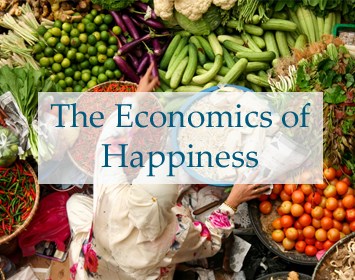Inauguration 2017 Special Coverage w/ Angela Davis, Naomi Klein, Ralph Nader & More
Menu

Special coverage in the Trump Era
From Public Citizen's Corporate Presidency site: "44 Trump administration officials have close ties to the Koch brothers and their network of political groups, particularly Vice President Mike Pence, White House Legislative Affairs Director Marc Short, EPA Administrator Scott Pruitt and White House budget director Mick Mulvaney."
Dark Money author Jane Mayer on The Dangers of President Pence, New Yorker, Oct. 23 issue on-line
Can Time Inc. Survive the Kochs? November 28, 2017 By Jane Mayer
..."This year, among the Kochs’ aims is to spend a projected four hundred million dollars in contributions from themselves and a small group of allied conservative donors they have assembled, to insure Republican victories in the 2018 midterm elections. Ordinarily, political reporters for Time magazine would chronicle this blatant attempt by the Kochs and their allies to buy political influence in the coming election cycle. Will they feel as free to do so now?"...
"Democracy in Chains: The Deep History of the Radical Right’s Stealth Plan for America" see: our site, and George Monbiot's essay on this key book by historian Nancy MacLean.
Full interview with The New Yorker’s Jane Mayer March 29, 2017, Democracy Now! about her article, "The Reclusive Hedge-Fund Tycoon Behind the Trump Presidency: How Robert Mercer Exploited America’s Populist Insurgency."
Democracy Now! Special Broadcast from the Women's March on Washington
The Economics of Happiness -- shorter version
Local Futures offers a free 19-minute abridged version of its award-winning documentary film The Economics of Happiness. It "brings us voices of hope of in a time of crisis." www.localfutures.org.
What's New?
December 31, 2011
Why a Woman of Color Risked Her "Honorary White Man" Status to Blow the Whistle at EPA
Excerpt:"
Coleman-Adebayo and I collaborated on a number of issues, especially assisting EPA in handling the important and delicate international health problem of women and the environment. Were women more sensitive to toxins and pollution than men? Did conventional environmental protection include women in its policies? These complex questions preoccupied the 1995 international conference in Beijing.
Working with Coleman-Adebayo for a year gave me the opportunity to understand that this African-American woman, holding a doctorate in political sciences from the Massachusetts Institute of Technology (MIT), had the virtues of a great education and a commitment to the well being of humankind. She loved Africa. She married a Nigerian engineering professor, Segun Adebayo. She respected my Greek culture and my knowledge of history and science.
I dug into the issue of women and the environment and, not surprisingly, the picture was and remains blurred. Like children, women were being hit with the brunt of global pollution. EPA tested mothers' milk in the late 1970s and found the milk contaminated by DDT-like poisons and other toxins. Women's biology makes them more vulnerable to hormone-like poisons; their work at home exposes them to substances trapped in the house, sometimes several times more deleterious than the polluted air of the atmosphere outside their homes.
In addition to searching the scientific literature for answers, I also talked to EPA colleagues all over the country. Then I wrote a memo on the unsettling results, recommending that the EPA administrator, Carol Browner, and the head of my office, Lynn Goldman, take the findings seriously and do something about the issue. But my "ecofeminist" memo caused anger instead of enlightenment, especially among senior women managers. "How dare you presume to know what Browner and Goldman ought to do?" they shouted.
I offer this story as an example of what it was to be an analyst with an environmental/public-health vision at EPA - in the 1990s or at any other time. Like me, Coleman-Adebayo wanted to do good: put EPA on the side of protecting people and nature from the toxic assault of industry.
But she also had a passion for Africa, and when, on March 1, 1995, the United States established the Gore-Mbeki commission, promising South Africa ways and means for facilitating a transition from apartheid to democracy, Marsha thought she would become an instrument for providing South Africa a modicum of technical assistance for health protection.
Her African contacts alerted her to the dangers of mining vanadium at Brits, South Africa. Vametco, an American subsidiary of Union Carbide, was extracting vanadium, which the CIA classified as a strategic metal for the United States. Vanadium was certainly an asset to American industry and the military, but getting it out of Africa was poisoning and killing African workers.
Jacob Ngakane, a South African black man representing the ailing vanadium workers, told Coleman-Adebayo that South Africa has "vast reserves" of vanadium, which is mined in pits. "Open, gaping wounds are carved into the earth," he said. "The workers in the [vanadium] mines are being poisoned ... They bleed from their eyes, their noses, their genitals, their colons. These same young men become impotent from working in the mines. Their tongues turn green."
Vanadium also wrecked Coleman-Adebayo's career." ...
by: Evaggelos Vallianatos, Truthout | Book Review

